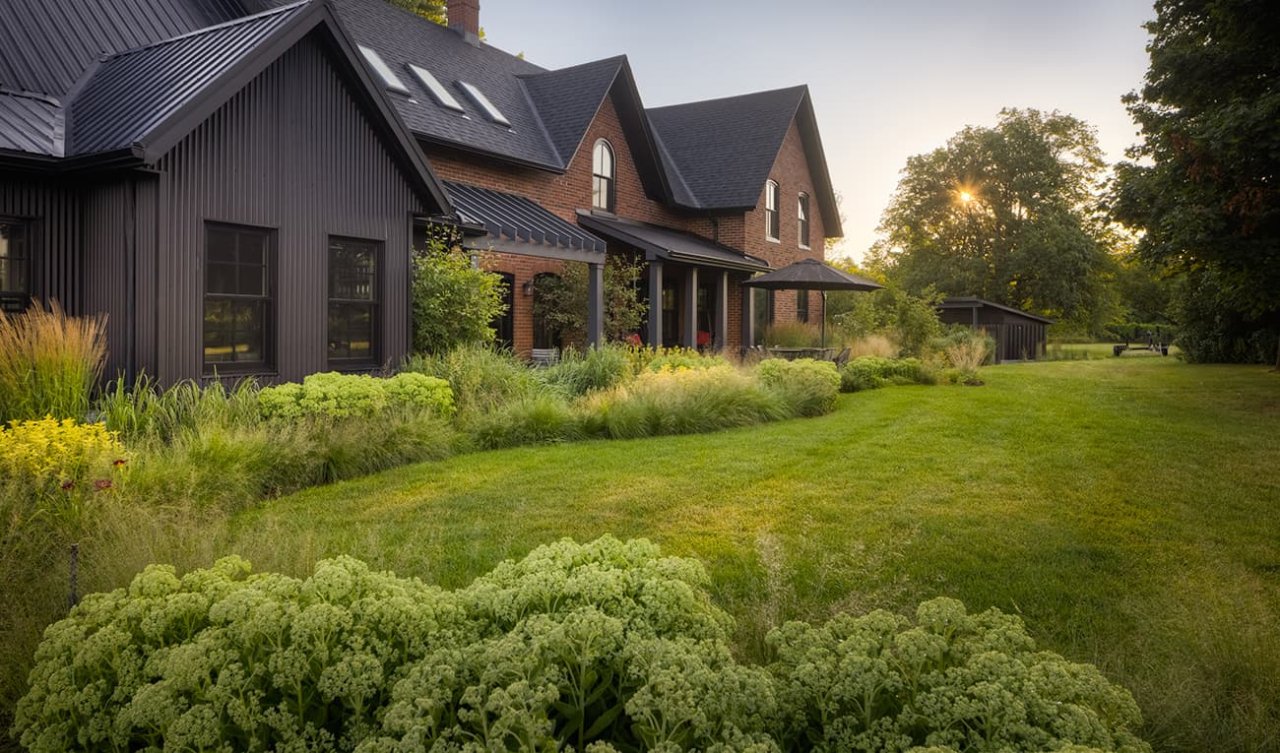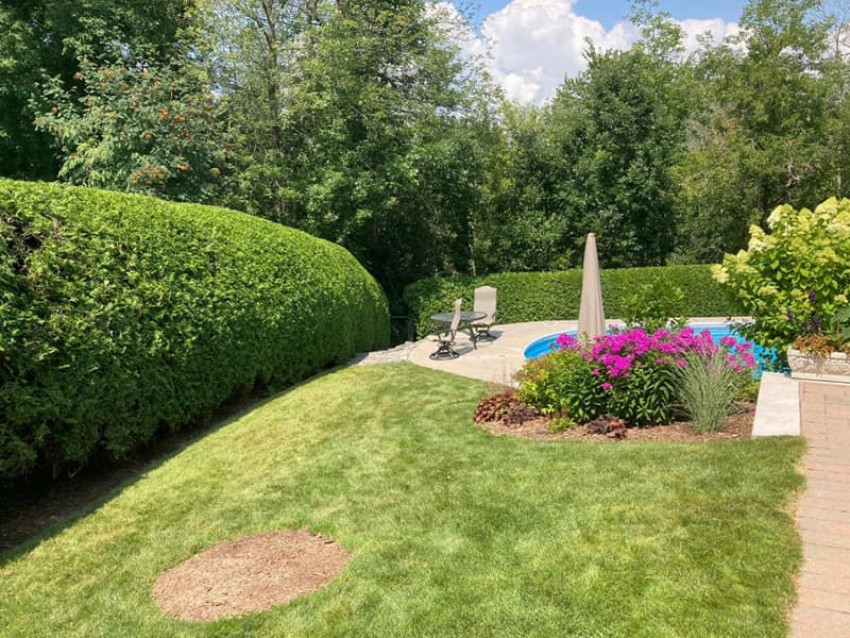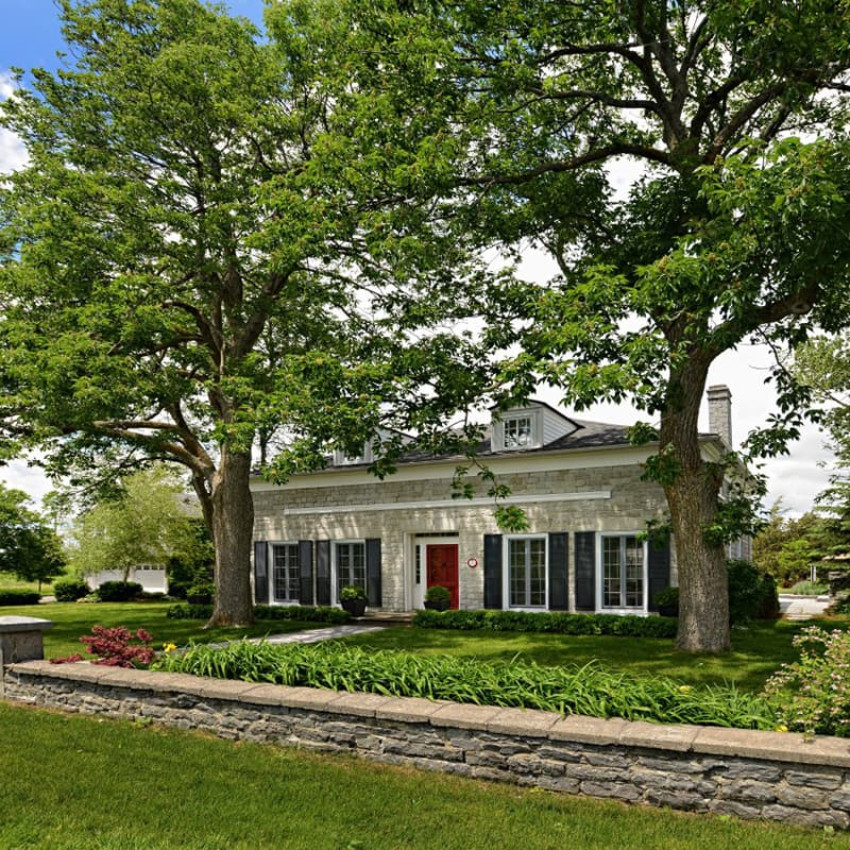Blog
Conserving Energy with Landscaping:

You might be wondering - what does energy conservation have to do with my landscape? What can my gardens really do to help reduce my energy use?
Conserving energy is a great way to reduce your carbon footprint, and it will save you money on heating and cooling bills. Did you know you can help conserve energy with a well thought out landscape? During the initial stages of design it is important to understand the microclimate of your property. Understanding where your home receives the most direct sunlight, what direction the winds come from, soil type, annual rainfall, etc. will guide you in what landscape design might be best suited for your property:
Microclimate:
A microclimate is the weather or climate conditions in the small area where your home is located. The main influencing factors of your properties microclimate is: Wind speed, Solar radiation, air temperature and humidity. Your home might experience more or less sun, shade, wind, rain, snow, moisture, or dryness than average local conditions. For example, if you are located on the edge of a great lake you probably experience higher winds and windchill, resulting in using more energy to heat your home. Meanwhile, let's say your home is located in an open suburban area with little to no sun protection, surrounded by other homes/buildings, asphalt roads, and minimal green space, thus absorbing heat (a phenomenon known as the Heat Island Effect). As a result, you have to rely heavily on your AC to keep your house cool. Both examples cost a substantial amount of energy and $$$ in the long run. That’s why it’s so important to design a landscape that can help manage your properties microclimate in a natural way.

Trees/hedges for wind protection:
Have you ever gone for a Sunday drive on a back road and seen a row of trees perfectly spaced apart along a field of crops? Farmers strategically plant rows of trees to act as windbreaks for their fields, and the particular reason for this is to protect their crops and soil from harsh weather conditions and wind damage. This method can provide the same benefit for your home, certain trees and plants are excellent at protecting your house and property from the elements, especially bone chilling wind, plus you get the added element of privacy. If the right varieties and species are planted strategically they can block chilly wind currents allowing your home to warm naturally in the winter. This will keep you comfortable and help to alleviate the amount of energy your home uses on heating. The best trees for blocking out chilly winds are Non-deciduous varieties that give you lush foliage all year long, such as: Cedar and Pine trees

Trees for shade:
In the heat of summer a common trick people often do to maintain a cooler house is closing the curtains to stop direct sunlight from entering through the windows to prevent heating up the interior. A more effective and long term solution is strategically placed broadleaf trees with a thick canopy near your house. This can provide a substantial amount of shade, limiting the amount of direct sunlight on your house, and reducing the need to bump up your AC. The best trees for this are deciduous varieties so you get sun protection in the summer and direct sunlight in the winter, such as an Oak or Maple tree.

Berms:
A berm is a rounded mound of soil constructed vertically to sit above ground level, often used in landscaping for aesthetic or practical purposes. To help you visualize it, try thinking of a golf course, its bumpy and wavy landscape is man made using dirt hills and turf. Just like trees, berms are great for privacy and protecting your home from wind chill but with the advantage of having a fast solution instead of waiting several years for your trees to mature for protection. If the sound of a raised hill on your lawn doesn’t sound appealing to you, there are ways to make it more aesthetically pleasing to the eye, such as adding trees, large rocks or even making it into a garden with a variety of shrubs and trees for added protection.
We hope this has given you some insight into how you can plan ways to have your own microclimate work for you, your home, and your wallet. There are, of course, many other considerations when it comes to designing with your microclimate in mind but thinking of windbreaks and solar protection are two key areas to start with. We always recommend partnering with a landscape professional to gain a full understanding of how your property can be best designed to benefit your home, lifestyle, and values. Call us today if you’d like to speak to one of our landscape professionals 613-476-1181.
Posted: September 26th, 2022
View More Posts